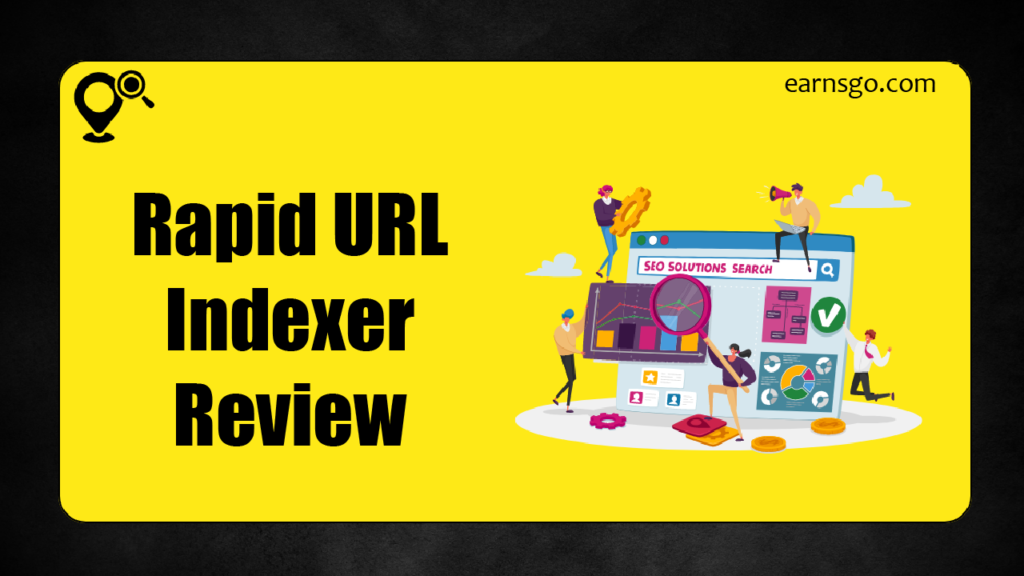
Rapid URL Indexer Review: Is This Tool the Secret to the Rapid Indexing? Whether you have waited days (or weeks) when Google indexes your fresh content, then read the Rapid URL Indexer review and see whether this is the tool which will help you to speed things up, and whether it is really worth your money.
Having your pages indexed quickly is one of those SEO issues that simply can never die away. You post something new, send it to Google Search Console and then… wait.
At times it even takes several days. Sometimes weeks. Or it may never occur at all especially when your site is new or low-authority.
Here is where such tools as Rapid URL Indexer come in. It promises to make it faster but does it really do so? And is it worth the price? It is time to make it simple.
In the following Rapid URL Indexer review, we are going to see whether this tool is worth the time and effort.
What Is Rapid URL Indexer?
The SEO tool Rapid URL Indexer serves to have the web pages be indexed within the search engines quicker, such as Google, Bing, and Yahoo, etc.
seo rapid URL Indexer device compared to ready passively, actively pushes URLs closer to crawlers with numerous strategies.
It can spell the difference between waiting weeks or even days before the content appears in Google. So does it? Although there is no tool that can provide indexing immediately, this tool will reduce the standard time of waiting by far.
Rapid URL Indexer Review: How Does It Work?
It is rather straightforward. In brief, it works like this: you set up a project in their dashboard. Just name it what you like and it makes sense to you e.g.
Afterwards, copy your URLs. It allows you to input up to 500 at a time already, which is better than the 10 URL limit of Google. It does not have any complex set-up. You push the submit button and then it is up to you.
Now starts the waiting but not as formerly. It will start giving you the first report after approximately four days. This indicates Google pages that it has already indexed and which one are not so yet.
It is not the last word yet but it will provide you a foretaste of what is working.
The whole story reveals itself at the 14 days mark. That is where you will find out the actual number of your pages that have been indexed.
The upside to that is that in case of any link failures, credits are automatically refunded. You need not appeal to get your money back.
Note:
With that said, it is not perfect. This won’t solve your problem of worse crawlability or thin content especially on your site. And although doing it is supposed to beat doing nothing, we are not yet talking of minutes but days.
The tool incorporates several strategies:
- Direct API Submissions- This process is a faster way to perform an API Route, and it will allow an API to be indexed with more aggressiveness, instead of the slower API route via the Search console.
- Backlink Pings – These tell backlink trackers (such as Ahrefs, Majestic) that new URLs are available, and this occurs indirectly, triggering crawlers.
- Social & RSS Signals- Distributes links across other websites to create crawlable references.
- Bulk Processing – Massive submissions are handled well, and are suited to large sites.
Such a multi-pronged approach has the added effect of ensuring that search engines will find it more easily.
An In-depth Analysis of the Top URL Indexing Tool 2025
1. The Google Search Console: The Usual Way
The best method that can be used to submit URLs is by using Google Search Console (GSC). It is free, simple to use, and provides you with access to extensive types of SEO data that you can use to optimize your websites.
How It Works:
GSC allows using the URL Inspection Tool manually to submit specific URLs to be indexed. Once you have checked through a URL, you can seek indexin,g which in most cases has led to reduced crawl intensity.
Pros:
- No costs.
- Sent directly tothe search index of Google.
- Gives an insight into the performance of the site, crawling mistakes, and other SEO indicators.
Cons:
- It is possible to add several URLs only.
- Even with the manual submission, it may take a couple of hours or a couple of days before Google has crawled and indexed the page.
The reasons why it works:
One of the most reliable indexing tools, GSC is directly related to an indexing system offered by Google. And if you are mainly concerned about ensuring that your URLs are indexed by Google, then this becomes a vital weapon in your seo arsenal.
2. Ping-O-Matic: fast, simple to use, multiple engines
Ping-O-Matic is a beneficial URL indexing site through which users can submit their URLs to all the search engines at a go.
Although it does not provide the richness of Google Search Console, it allows you to accelerate the indexing of more search engines.
Mechanism of Action:
Ping-O-Matic operates by pinging search engines, signalling that a page has been updated or generated. This is not a guaranteed solution since one cannot expect immediate indexing, but it can speed up the process because search engines will be notified about new information.
Pros:
- Caterers to more than one search engine (not only Google).
- Usable free of charge.
- Blogs, articles, and updates to the site can be made by use of this.
Cons:
- They can only send contacts to search engines, not send URLs to crawl.
- Does not include comprehensive indexing reports or information.
Why It Works:
Ping-O-Matic is one of the easy and low-work solutions to inform the search engine of the fresh material. It does not mean you will be indexed immediately, but it could give your pages the chance to have quicker crawls, particularly when you use smaller search engines or niche search engines.
3. Indexification: mass URL Submission Tool
Indexification has an option of bulk URL submission, which is useful to site owners who operate large sites or who accommodate several URLs.
This product sends the URLs to Google and other search engines directly, meaning a faster crawl, more indexing.
How It Works:
The users are able to provide a CSV file which consists of a list of URLs and will automatically be submitted to the search engine to be crawled by Indexification. This tool is necessary when the sites require fast indexing, new content, or sites that have a long list of URLs that are updated regularly.
Pros:
- Uploading of URLs in bulk.
- Compatible with Google and Bing, and other search engines.
- Saves time when dealing with massive SEO campaigns.
Cons:
- Fee (yet low cost to high-volume users).
- You are only required to bulk upload URLs either manually or through CSV.
The Rationale:
Indexification is especially applicable to big websites or businesses that usually update their content. It makes the process of submitting URLs automatic, thus faster and more productive than manual submission.
Conclusion: Rapid URL Indexer Review
Rapid URL Indexer review does what it says. It is not magic, but it is one of the best tools SEs have to accelerate speed at indexing, particularly in conjunction with well-considered or foundational SEO.
It will be most successful on new websites with slow indexing, publishers/news sites that require immediate visibility, and large sites with hundreds of pages of content to index.
FAQ’s About Rapid URL Indexer Review
Does Rapid URL indexer pay back unindexed URLs?
Ans: Yes, the URL indexer offers automatic refunds of all the un-indexed links.
Can a quick URL indexer enhance Google search results?
Ans: Yes, it would benefit your ranking up the ladder by making you have a higher online presence with the immediate indexing of your content.








